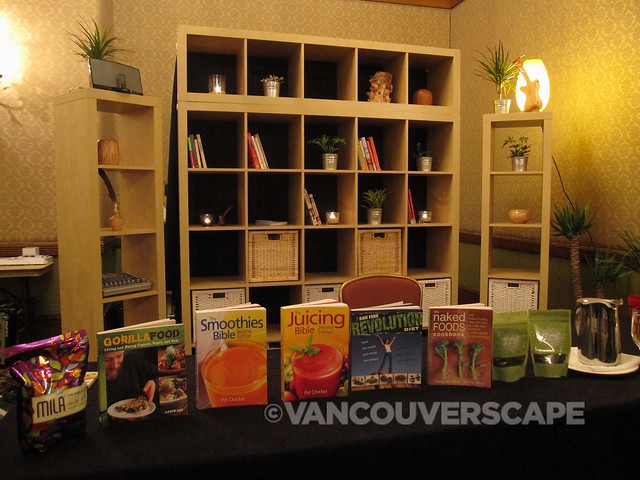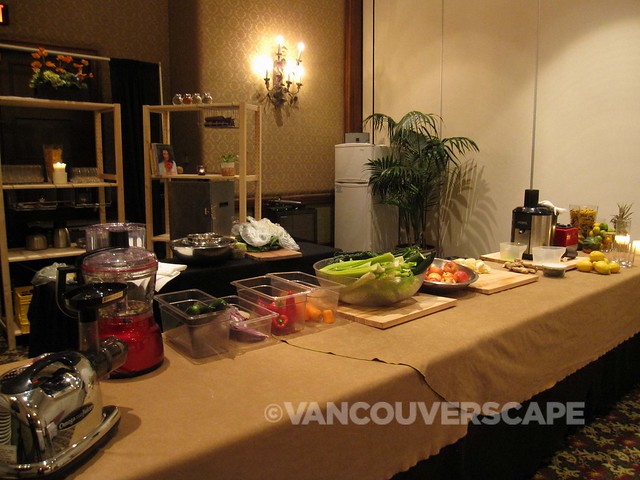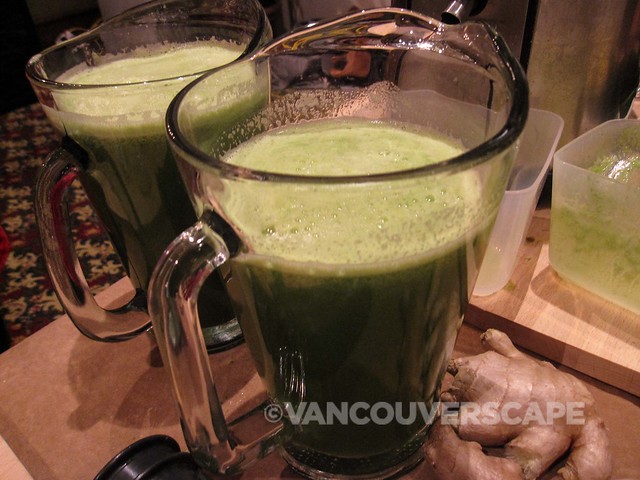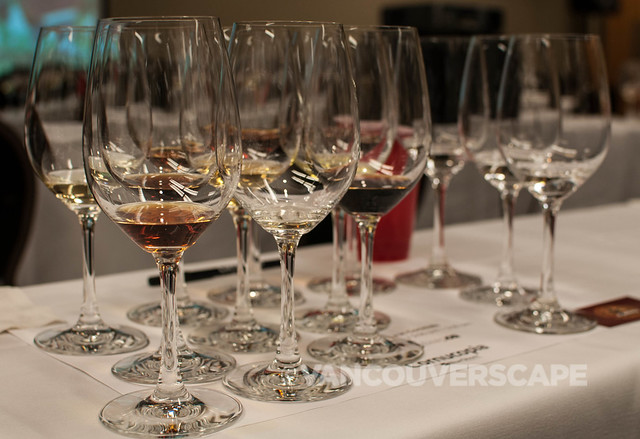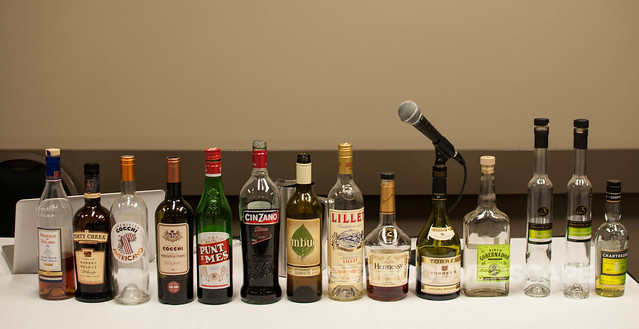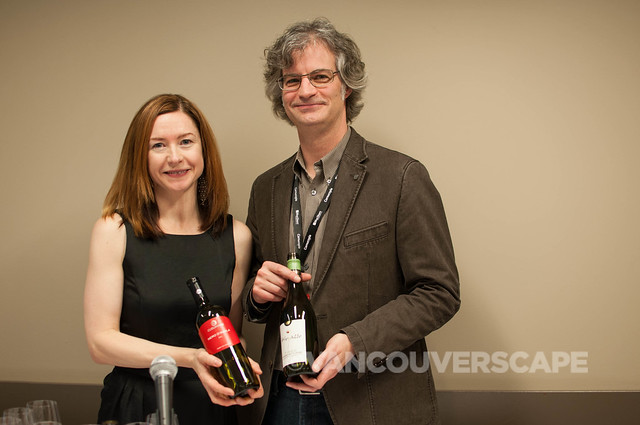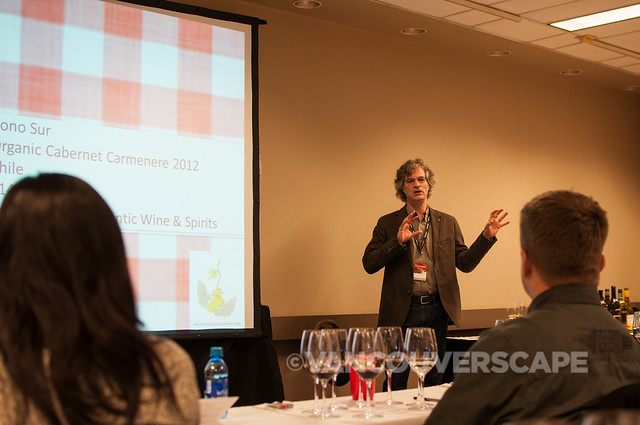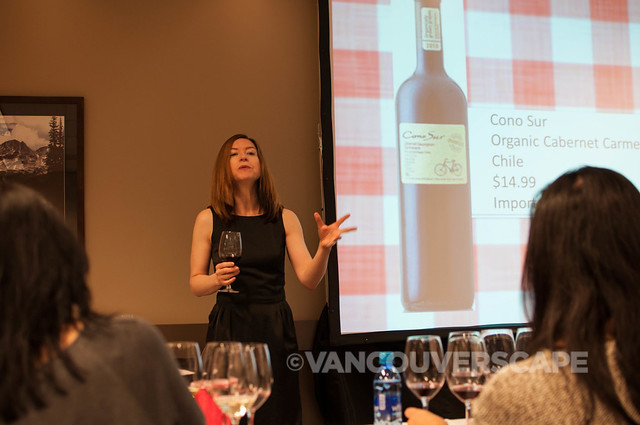Whistler Cornucopia was extended to an 11-day festival this year. Alongside food and wine dinners came morning meditation and yoga sessions as well as diet, lifestyle, and wellness-related seminars.
I selected three events for variety: Nourish: Healing Foods, All About Grapes in Cocktails, and Matching Wine with Pizza.
The Nourish seminars, meditation and yoga sessions were all held at the Fairmont Chateau Whistler ballrooms, all low-lit with Oriental rugs, bookcases with books and small artifacts on the shelves, and lots of organic Namasthé tea products to warm the body. These were relaxing spaces, perfect for taking things down a notch or two during the busy festival.
It’s well known that food is medicine, and raw food chef/wellness consultant Merina Koly couldn’t agree more. During our Healing Foods seminar, Merina explained various ways that our bodies can benefit from whole foods, a detox or simple cleanse. If you’re feeing lethargic, it may be time to cleanse your system of unwanted toxins. As our bodies are unique, the generic over-the-counter cleanses aren’t optimal. It’s better to seek a naturopath or health consultant in order to get the most out of a more fine-tuned cleanse that will react on your own body’s needs.
Spring and fall are the best times for a cleanse. Whole foods are integral for cleansing. There are five important foods that help to repair the body:
Garlic: Nature’s antibiotic and a healing superfood
Honey: Heals dermatitis, candida, diabetic ulcers, dental plaque, stomach-related issues
Apples: Colon cancer fighter, resists type 2 insulin
Sunlight: Essential for well-being and healing, helps produce serotonin, eczema, psoriasis; best places on body to get Vitamin D: back of knee and inner upper arm. Seek out natural D3 supplements and find sunshine this winter!
Turmeric: World’s most important herb, great for inflammation, DNA damage (anti-aging repair), helps break down bad fats, helps prevent colon, breast, and lung cancers, tumors, Alzheimer’s Disease
The healthier your body is, the less you’ll need to eat, as your body will be properly fed through the nutrients it needs. In North America, we’re generally undernourished and overfed. As this is no surprise with the rise of GM crops and fast-food choices, it’s time to gain control and form a strategy to help keep your system disease free.
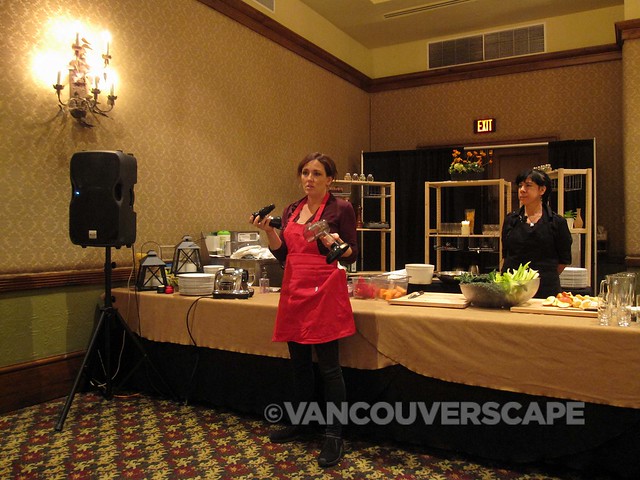
[L to R: Merina Koly, Audra Mott]
And with that, we were led to an adjacent room for a raw, vegan lunch consisting of a freshly-juiced green energy boost and wraps with collard greens and tahini-garlic dressing, as part of the Fueling to Detox seminar. Both Merina Koly and Audra Mott demonstrated ways to juice, what ingredients to use for optimal benefits, as well as recipe books to inspire juicing at home.
Juicing is not meant as a meal replacement but rather a boost of added hydration and nutrients. The best times to juice? Morning and mid-afternoon when the body has the best chance of utilizing all those good vitamins and minerals to help repair the body. Start the mix by using water-based vegetables in the juicer. If you’re a pineapple lover, the core is THE best source of enzymes and antioxidants.
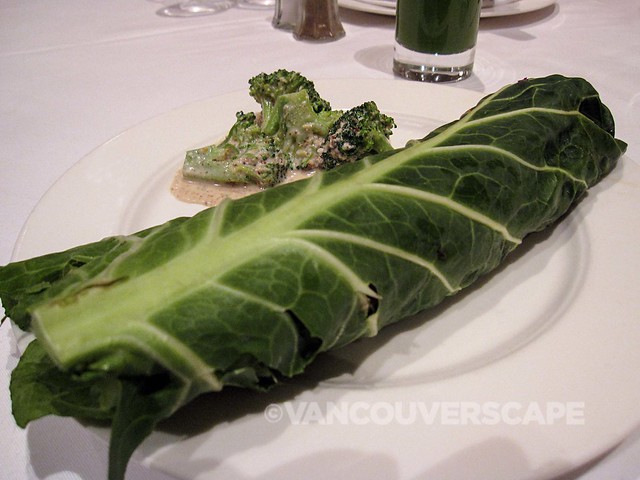
[Raw food lunch: Wraps with collard greens, tahini dressing]
And if you’re not going organic, at least consider buying organic berries, lettuce, and spinach, as they contain no barriers against the approximately 75 varieties of sprays being used in North America.
Our Grapes in Cocktails seminar was led by JS Dupuis (bartender at both Tableau Bar Bistro and Homer Street Café and Bar in Vancouver) and Keith Nicholson of Wine Monkey. The seminar was originally meant to include Lauren Mote and Jonathon Chovancek of Bittered Sling and award-winning bartender Jay Jones Shangri-La Vancouver. The last-minute lineup switch still brought an interesting series of topics under discussion during the 90-minute seminar.
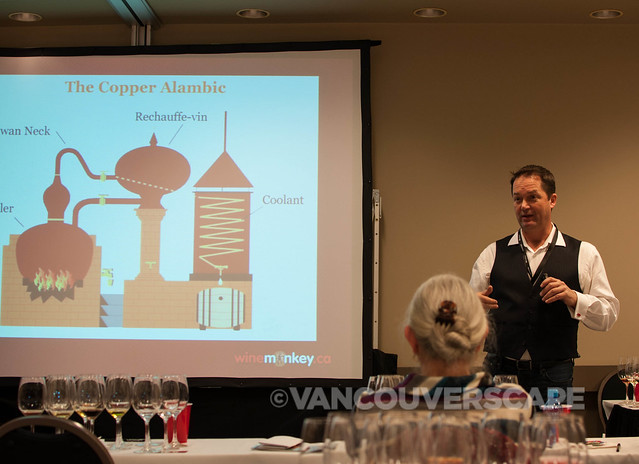
[Keith Nicholson of Wine Monkey]
The process of distillation can be traced back to the 1400’s when the Chinese and Arab worlds were utilizing distillation for perfume and aromatics; a major part of its origin can be traced back to Moorish Spain. Later, the savvy Dutch created brandwijn (burned wine) by adding water to wine and burning it, in order to save space when wine barrels took up too much storage space.
There are four major categories when it comes to spirits:
– Vermouth and fortified wines
– Brandy
– Grappa (known as Marc in French)
– Neutral Spirits
Turin, Italy is the birthplace of vermouth. Using wine as a base creates a lot of flavour layers in all three vermouth styles: bianco, rosso, and dry. It also gives some great texture to a martini. We sampled various spirits in the name of ‘education’, tasting Cocchi Di Turino, Punt e Mes, and Imbue, a small-batch, cocktail-friendly craft vermouth.
I found a favourite in Lillet, from the Bordeaux region of France. Sauvignon blanc and Semillon combine to make this a lovely aperitif, one of my favourites in the bunch. Lillet was also Queen Victoria’s favourite bevvy.
Both Cognac and Armagnac, France are homes to brandy. It was cognac’s strategic position close to the coast that made that region’s product get to market faster than its little inland cousin. We sampled Hennessey VS, considered one of the four big cognac houses in the world. Adding a bit of room-temperature water to cognac will help bring out its aromatic notes. Scotch works this way too, but forget about ice: it just tightens the flavours right back up.
In fact, drinking a high-end scotch on the rocks isn’t doing you a favour, flavour-wise. It might sound cool to order, but best leave the scotch on the rocks for the cheap stuff.
One of the best things to come out of prohibition was that it sent a lot of out-of-work bartenders to Europe and the Caribbean, where they learned about regional ingredients that came back to this side of the world, making for great cocktails.
We tried two grappas, both from Okanagan Spirits: Pinot noir and Gewürztraminer. In Italy, a “Corrected Espresso” (known as Espresso Correto) involves adding a bit of grappa to the tail end of your espresso – the crema – and then happily enjoying a proper ending to the cup.
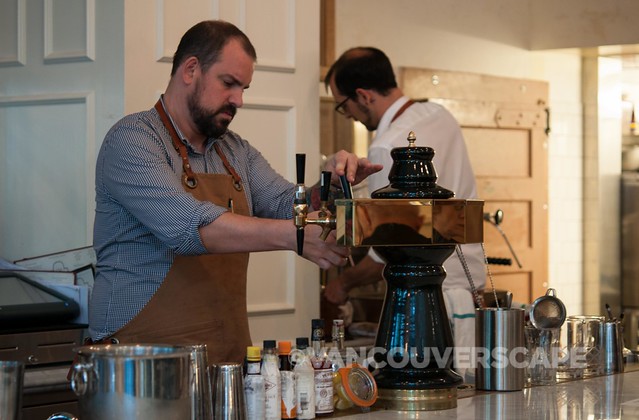
[JS Dupuis at Homer Street Cafe and Bar]
Both JS and Keith touched on neutral spirits, chiefly absinthe, and its history during the Belle Epoque. The anise-flavoured, highly alcoholic drink is best served dripped through a sugar cube in an absinthe tower. The natural green colour is derived from the chlorophyl in the wormwood plant. Banned in 1911, the Swiss government got absinthe back on the market in 2007 after proving in testing that it would take five litres of the stuff to cause hallucinations (with that amount in your system, you’d have long checked out anyway).
While the exact strength is a matter of personal taste, absinthe is intended to be drunk as a mildly alcoholic aperitif, more like wine than liquor, at between 12% to 14%.
Iain and Barbara Philip are no strangers to the wine world. Barbara, a wine consultant, is Canada’s only female master of wine, and is currently the European Portfolio Manager, in charge of selecting the European wines that appear on our government liquor store shelves.
Iain is a skilled wine teacher and works with Wine and Spirit Education Trust, as well as writing, judging, and attending numerous wine events on a yearly basis.
Both enjoy local pizza fave Creekbread. The Creekside pizza parlour offers locals and visitors alike locally-sourced, quality ingredient-laden flatbread pizzas, as well as salads and decadent desserts. When in Whistler, the couple often get together with friends, sharing pizzas and wines over friendly conversation.
This brought about the idea to create a seminar on pie and wine pairing. Things to consider when pairing pizza with wine include a wine’s appearance, nose, and palate. Is the wine sweet, acidic, with a heavy body, intensity, and/or alcohol content? Matching the weight of the food with the weight of the wine is a good rule of thumb, taking care to avoid one overpowering the other.
A wine’s acidity helps to cut through fat, rich food, so the richer/fattier a meal is, the more it seeks the company of wines with higher acidity.
Believe it or not, spicier foods make your glass of wine seem more intense and alcoholic in nature. If your food is heavy on the spices, consider a lower-acidic wine, or switch to a beer.
We sampled two wines with each of the four pizza slices, allowing lively conversation between Barb and Philip, as each discussed the merits behind their chosen pairing. Alongside Italian wines, a Stoneboat Okanagan Valley 2010 Pinotage, a Chilean Cono Sur Organic Cabernet Carmenere 2012, and a late harvest Wild Goose Vineyards’ Autumn Gold 2012 were part of the experience.
A key point in the seminar: Don’t forget to try the whites when it comes to pizza. The flavour profiles just may surprise you.

